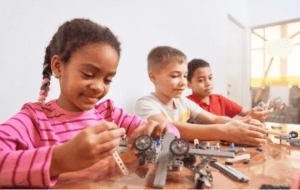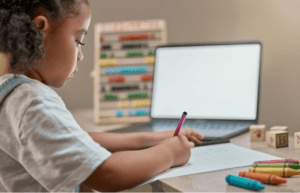Pearl Strategy and Innovation Design recently attended the webinar hosted by Trend Hunter where experts shared the benefits of leveraging AI to benefit the modern lives of children. Here is our take on it.
Summary
In today’s rapidly evolving world, dominated by technology and artificial intelligence, parents are increasingly concerned about how to raise children who can thrive amidst these changes. As a parent of a two-year-old and a one-year-old, I frequently ponder the skills my children will need to succeed in an AI-driven future. While many aspects of life might be automated, one human trait that remains irreplaceable is creativity. Thus, fostering creativity in children becomes paramount.
The Importance of Creativity
Creativity isn’t just about arts and crafts; it’s a critical skill that involves problem-solving, critical thinking, and the ability to innovate. In a world where routine tasks may be handled by machines, the ability to think creatively will set individuals apart. Here are some ways to nurture and enhance your child’s creativity.

1. Encourage Imaginative Play
Imaginative play is crucial for cognitive and social development. It allows children to experiment with different scenarios, roles, and outcomes. Provide them with toys that stimulate their imagination, such as building blocks, costumes, or art supplies. Avoid toys that dictate a specific way to play and instead choose those that allow for open-ended creativity.
2. Limit Screen Time
While technology offers numerous educational benefits, excessive screen time can hinder creativity. Screens often provide passive entertainment, reducing the time children spend engaging in active, imaginative play. Set boundaries for screen time and encourage activities that involve physical interaction and creative thinking.

3. Provide Diverse Experiences
Expose your children to a variety of experiences. Take them to museums, parks, and cultural events. Encourage them to explore nature, experiment with different art forms, and engage in physical activities. These experiences provide a rich tapestry of stimuli that can inspire creativity and innovation.
4. Promote Problem-Solving
Encourage your children to solve problems on their own. Instead of providing solutions, ask open-ended questions that stimulate thinking. For example, if they’re building a tower with blocks and it keeps falling, ask them why they think it’s happening and what they could do differently.

5. Celebrate Effort, Not Just Results
Focusing on the process rather than the outcome helps children develop a growth mindset. Celebrate their efforts, creativity, and willingness to try new things. This encourages them to take risks and learn from their mistakes, which is essential for creative thinking.
6. Create a Creative Environment
Designate a space in your home where your child can freely express their creativity. This could be a corner for drawing and painting, a table for building projects, or a small garden for exploring nature. Ensure that this space is stocked with materials that inspire creative activities.

The Role of Technology
While it’s essential to limit screen time, technology can also be a tool for fostering creativity if used appropriately. Educational apps that encourage drawing, storytelling, and building can be beneficial. Games like Minecraft, where children can create and explore virtual worlds, can also stimulate creative thinking and problem-solving skills.

Balancing Technology and Traditional Play
It’s crucial to strike a balance between traditional play and technology. Encourage activities that don’t involve screens but also recognize that some digital tools can enhance creativity. The key is moderation and ensuring that technology complements rather than replaces traditional play.
Implications
In an AI-driven world, creativity is an invaluable skill that will enable children to adapt and thrive. By encouraging imaginative play, limiting screen time, providing diverse experiences, promoting problem-solving, celebrating effort, and creating a creative environment, parents can foster their children’s creative development. While technology has its place, the foundation of creativity lies in experiences that stimulate the mind and encourage exploration. As we navigate this evolving landscape, let’s focus on nurturing the creativity that will define the next generation’s success.
Want more insights, strategy and innovation? connect with us at pearl-strategy.ca or John at johnchan@pearl-strategy.ca.
Source Trend Hunter, July 18, 2024




